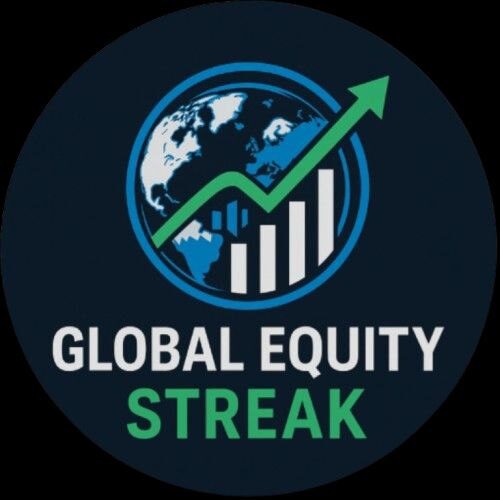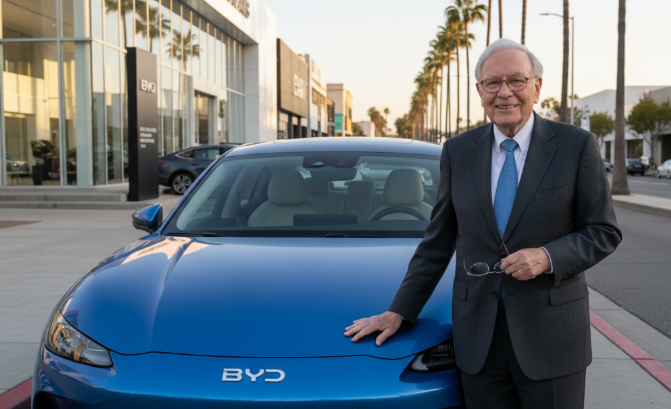Warren Buffett Exits BYD After 17 Years:In a move that underscores the disciplined approach of one of the world’s most legendary investors, Warren Buffett’s Berkshire Hathaway has fully divested its stake in Chinese electric vehicle (EV) giant BYD Co. Ltd., marking the end of a 17-year investment journey that began in 2008. The exit, confirmed through a recent U.S. Securities and Exchange Commission (SEC) filing by Berkshire Hathaway Energy—the subsidiary that held the shares—values the position at zero as of March 31, 2025.
Warren Buffett Exits BYD After 17 Years
In a decisive move that highlights the disciplined capital allocation approach of legendary investor Warren Buffett, Berkshire Hathaway has fully exited its long-standing investment in Chinese electric vehicle (EV) giant BYD Co. Ltd. This marks the conclusion of a 17-year journey that began in 2008 and has been one of Berkshire Hathaway’s most lucrative non-U.S. bets. The exit, confirmed in a recent U.S. Securities and Exchange Commission (SEC) filing by Berkshire Hathaway Energy—the subsidiary holding the shares—values the position at zero as of March 31, 2025.
The news, first reported by CNBC on September 21, 2025, triggered an immediate market reaction. BYD’s Hong Kong-listed shares (ticker: 1211.HK) fell 3.35% on September 22, closing at HK$109 ($14), down from a peak of HK$155 earlier in 2025. While analysts suggest this sale is part of normal portfolio management, it also signals caution in the face of overvalued assets within a maturing EV sector.
The story of Berkshire’s investment in BYD offers a fascinating insight into both the evolution of China’s EV industry and Buffett’s investment philosophy.
The Origins: Betting on China’s EV Future
Berkshire Hathaway’s journey with BYD began in September 2008, when it invested roughly $230 million to acquire 225 million shares, amounting to a 9.9% to 10% stake in the then-obscure Shenzhen-based battery manufacturer. At the time, BYD was primarily a rechargeable battery producer for mobile phones, but it had begun pivoting toward electric vehicles with its first plug-in hybrid model.
The investment was largely driven by Buffett’s late vice chairman, Charlie Munger, who discovered the company through mutual friend Li Lu, founder of Himalaya Capital. Munger was captivated by BYD’s founder and CEO, Wang Chuanfu, describing him as a combination of technical brilliance and executional excellence, akin to “Thomas Edison and Jack Welch.” At Berkshire’s 2009 annual meeting, Buffett credited Munger entirely for the BYD investment, calling the company a “damn miracle.”
Key Milestones in Berkshire’s BYD Investment
- September 2008: Berkshire acquires 225 million shares for $230 million (~HK$8/share), securing ~10% of BYD, whose market cap was ~$2.3 billion.
- 2010: Buffett meets Wang Chuanfu and Bill Gates in China, praising BYD as building “the vehicle of the future.”
- 2021-2022: BYD surpasses Tesla as the world’s top EV seller, with shares rising over 600% from 2008 levels, peaking at HK$300/share in June 2022. Stake value reaches ~$9 billion.
- August 2022: Berkshire sells 1.33 million shares at an average of HK$277/share.
- June 2024: Stake reduced to less than 5%, with 54 million shares remaining valued at $415 million by end-2024.
- March 31, 2025: Full exit confirmed; SEC filing shows investment valued at zero.
Over nearly two decades, BYD has transformed from a niche battery supplier into a global EV powerhouse with dual listings on Hong Kong (H-shares) and Shenzhen (A-shares) exchanges. The company currently has a market capitalization exceeding HK$1 trillion ($128 billion) in Hong Kong and 975 billion yuan ($137 billion) in Shenzhen, making Wang Chuanfu China’s 11th-richest person with a net worth of $24.4 billion.
The Profits: A 20x-30x Return
Berkshire’s BYD investment exemplifies the power of long-term investing. The initial $230 million outlay grew into one of Buffett’s most profitable international positions. From pre-purchase levels, the stock appreciated over 4,500% through March 2025.

At its peak in June 2022, the stake’s value reached ~$9 billion. Berkshire gradually sold off 76% of its shares by mid-2024. Analysts estimate total proceeds from these sales exceeded $7.2 billion, resulting in a net profit of approximately $7 billion—a 30x multiple or roughly 3,890% return over 17 years. The final 24% of the stake was quietly liquidated in early 2025, freeing capital for safer investments, such as U.S. Treasury bills and other portfolio adjustments.
Reasons Behind the Sale
While Buffett has not provided a detailed explanation, market analysts and prior comments offer insights into the rationale behind the exit.
Key factors include:
- Taking profits at peak valuation: BYD’s shares rose over 20 times from 2008 levels, making the position relatively overvalued.
- Geopolitical tensions: U.S.-China relations, escalating tariffs, and Beijing’s stance on Taiwan increased risks for U.S. investors.
- Market and sector headwinds: China’s EV market faces fierce competition, price wars, and slowing domestic sales. BYD missed its 5.5 million-unit sales target in Q2 2025 and cut its 2025 sales forecast by 16% to 4.6 million vehicles.
- Portfolio reallocation: Berkshire Hathaway Energy reduced its overall investments from $1.3 billion to $950 million between December 2024 and June 2025, redeploying capital to more secure assets.
BYD’s PR head, Li Yunfei, responded on Weibo: “Thank you Berkshire for your investment, help, and companionship over the past 17 years. In stock investing, buying and selling are normal practices.”
Market Impact and the Road Ahead for BYD
The exit removes the “Buffett-backed” halo from BYD, potentially causing caution among retail investors. BYD’s shares are down approximately 30% from 2024 highs and trade at a forward P/E of around 15x, significantly lower than Tesla’s 60x, reflecting slower growth. Globally, BYD continues to expand, leading in European BEV registrations since May 2025 and targeting 20% export growth. However, U.S. tariffs of up to 100% restrict access to critical markets.
For Buffett, the exit releases roughly $7 billion, likely redeployed to U.S.-centric investments such as Apple or Occidental Petroleum. At 95, Buffett continues to demonstrate the effectiveness of his disciplined strategy: enter on vision, exit on valuation and market realities, and maintain a focus on long-term wealth creation.
Berkshire Hathaway’s BYD saga, spanning 17 years, is a textbook example of patient, high-conviction investing paying off handsomely while adapting to evolving global market dynamics.
Disclaimer: The information provided in this article is for informational and educational purposes only and does not constitute financial, investment, or professional advice. The content is based on publicly available sources and estimates from market analysts. Readers should conduct their own research and consult with a qualified financial advisor before making any investment decisions.

